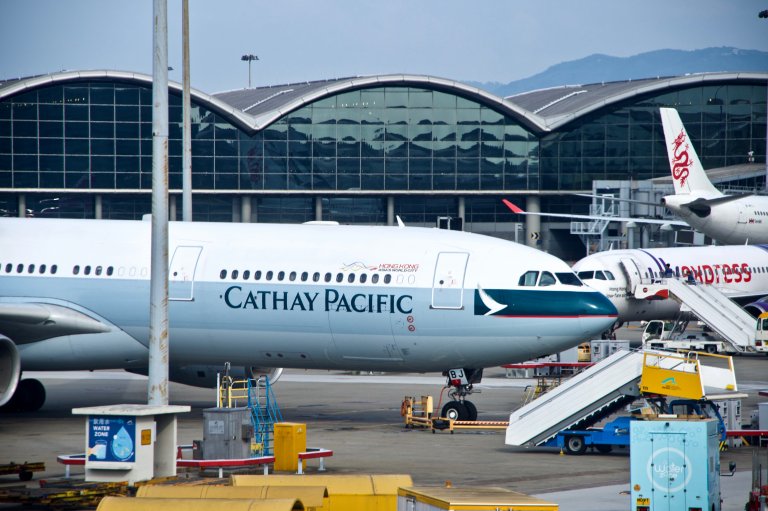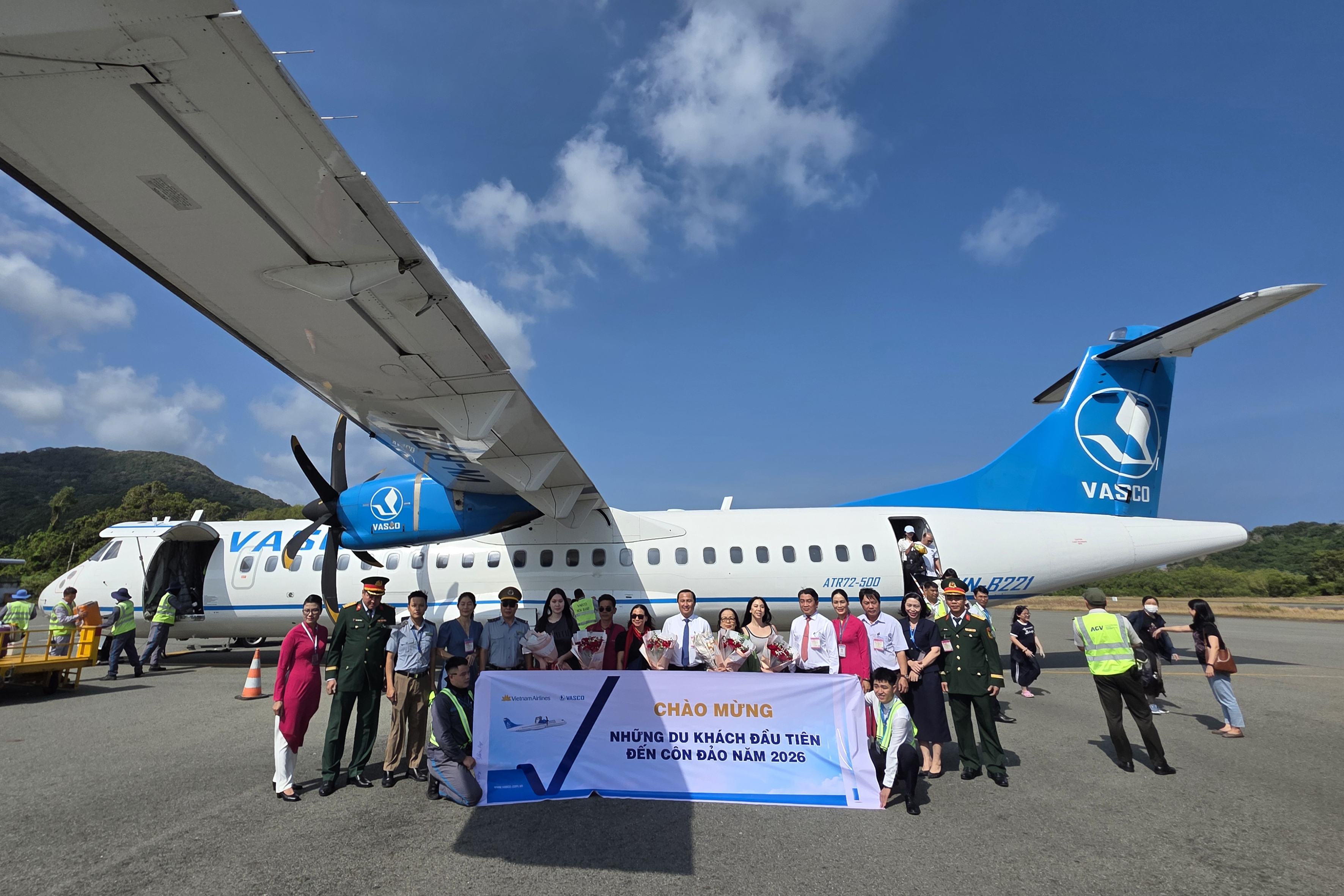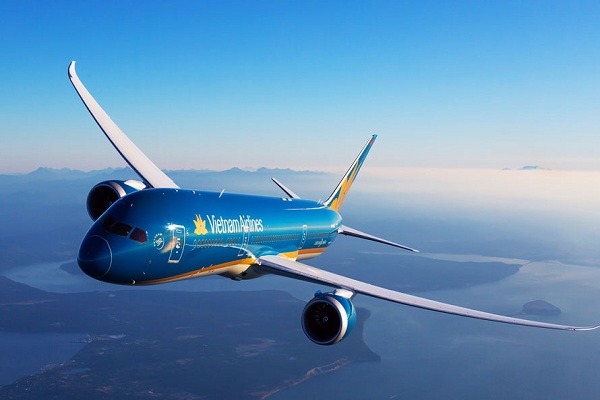
Cathay Pacific carried a total of 1,322,180 passengers last month, an increase of 4,217% compared with March 2022. The month’s revenue passenger kilometres (RPKs) increased 4,828% year-on-year. Passenger load factor increased by 44.8 percentage points to 90.4%, while capacity, measured in available seat kilometres (ASKs), increased by 2,384% year-on-year. In the first three months of 2023, the number of passengers carried increased by 3,907% against a 2,174% increase in capacity and a 4,432% increase in RPKs, as compared with the same period for 2022.
The airline carried 121,776 tonnes of cargo last month, an increase of 25.3% compared with March 2022, when our cargo capacity was significantly reduced due to stricter aircrew quarantine measures. The month’s cargo revenue tonne kilometres (RFTKs) increased 102.5% year-on-year. The cargo load factor decreased by 14.6 percentage points to 66.9%, while capacity, measured in available cargo tonne kilometres (AFTKs), increased by 146.7% year-on-year. In the first three months of 2023, the tonnage increased by 35.6% against a 178.4% increase in capacity and a 128.1% increase in RFTKs, as compared with the same period for 2022.
Travel
Chief Customer and Commercial Officer Lavinia Lau said: “The first quarter of 2023 has been one of continued improvement for our travel business as we maintain our focus on reconnecting Hong Kong with the world. Cathay Pacific’s passenger numbers continued to increase month on month in March, growing 19% to more than 1.3 million compared with February.
“We resumed services to three more destinations – Shanghai Hongqiao airport, Haikou and Nagoya in March. Hongqiao in particular saw huge demand for both business and leisure travel. Our Japan and South Korea flights benefited from good passenger traffic for the cherry blossom season and demand ahead of the Easter holiday. Demand between Hong Kong and Taiwan was similarly strong, including transit traffic from Taiwan to Europe and Indonesia via the Hong Kong hub. Media Information
“We were also delighted to bring back more customer experience highlights, with First class returning on select flights on our Beijing and Los Angeles routes, and our airport lounges in Bangkok, Beijing and Manila also reopening, all of which were very welcomed by our customers who missed those special Cathay touches over the past three years.
Cargo
“For our cargo business, tonnage carried in March saw double-digit growth of 17% over February as volumes recovered after the Lunar New Year holiday, and we operated an enhanced freighter schedule to capture expected demand. E-commerce shipments from Hong Kong and the Chinese Mainland were the key drivers of growth; however, other regions remained relatively flat, reflecting the ongoing weaker demand for global airfreight.
“We continued to enhance our cargo customer proposition in March, with the launch of our Cathay Mail solution. The refreshed suite of digitised tools allows greater transparency for our post office customers, enabling package-level track-and-trace visibility and improved efficiencies in mail capacity planning and administrative handling which their customers expect, especially as they compete in the express e-commerce segment.
Outlook
“Turning to April, we were thrilled to see the Cathay/HSBC Hong Kong Sevens back in full force earlier this month. Cathay has long been a supporter of mega events that help build Hong Kong’s international status. As the first mask-free Sevens after the Hong Kong border reopened, it was great to see visitors from around the world once again coming to Hong Kong to experience this incredible sporting weekend filled with fun and laughter.
“Regarding our travel business, we continued to see strong demand into the Easter holidays, reflecting positive and robust sentiment for travel. On 9 April, we broke the 50,000 mark for the first time since the pandemic, carrying 53,233 passengers on that day. We are actively working to add more flights to our schedule to satisfy customer demand, in particular between Hong Kong and the Chinese Mainland. Between now and the end of October, the number of return flights will be progressively increased to about 160 per week, covering 16 airports in 15 cities. This includes four return flights per day to Beijing, six return flights per day to Shanghai Pudong airport and nine return flights per week to Shanghai Hongqiao airport.
“Meanwhile on the cargo side, in April we expect that the Ching Ming Festival, Easter and Ramadan will dampen market demand. We will adjust our freighter capacity in an agile manner to reflect the demand picture, which remains variable but overall softer than prior periods. We are nevertheless continuing to expand market coverage for our customers, as the cargo belly space and network offered by our widebody passenger fleet continues to grow. Media Information
“Earlier this month, Hong Kong International Airport was once again named the busiest cargo airport in the world in 2022. As the city’s home carrier, we worked hard to ensure the movement of important cargo was maintained despite significant challenges and operational constraints last year. We are very proud to have contributed to this achievement and remain committed to rebuilding the Hong Kong international aviation hub to surpass pre-pandemic levels of airfreight tonnage ahead.”
Singapore Airlines reports robust demand
The robust demand for air travel continued in March 2023, with the Singapore Airlines (SIA) Group seeing strong passenger traffic and load factors across all route regions. Group passenger capacity was 10.9% higher compared to February 2023, and at 79% of pre-Covid-19 levels during the month.
SIA and Scoot carried a combined 2.7 million passengers in March 2023 (+14.1% month-on-month, and three times the number of passengers carried in March 2022). Group passenger load factor (PLF) was 89.0% (+2.4 percentage points month-on-month, +34.5 percentage points year-on-year). SIA’s PLF was 87.9%, while Scoot’s PLF of 92.8% was the highest in its history.
The cargo load factor of 55.1% was 17.4 percentage points lower year-on-year. Cargo loads declined by 13.4% year-on-year due to weaker demand, while capacity expanded by 14.1% as increased passenger services resulted in higher bellyhold capacity.
At the end of March 2023, the Group’s passenger network2 covered 109 destinations in 36 countries and territories. SIA served 74 destinations, while Scoot served 58 destinations. The cargo network comprised 118 destinations in 38 countries and territories.
Cre: Asian Aviation
Nguyen The Son-COMM






